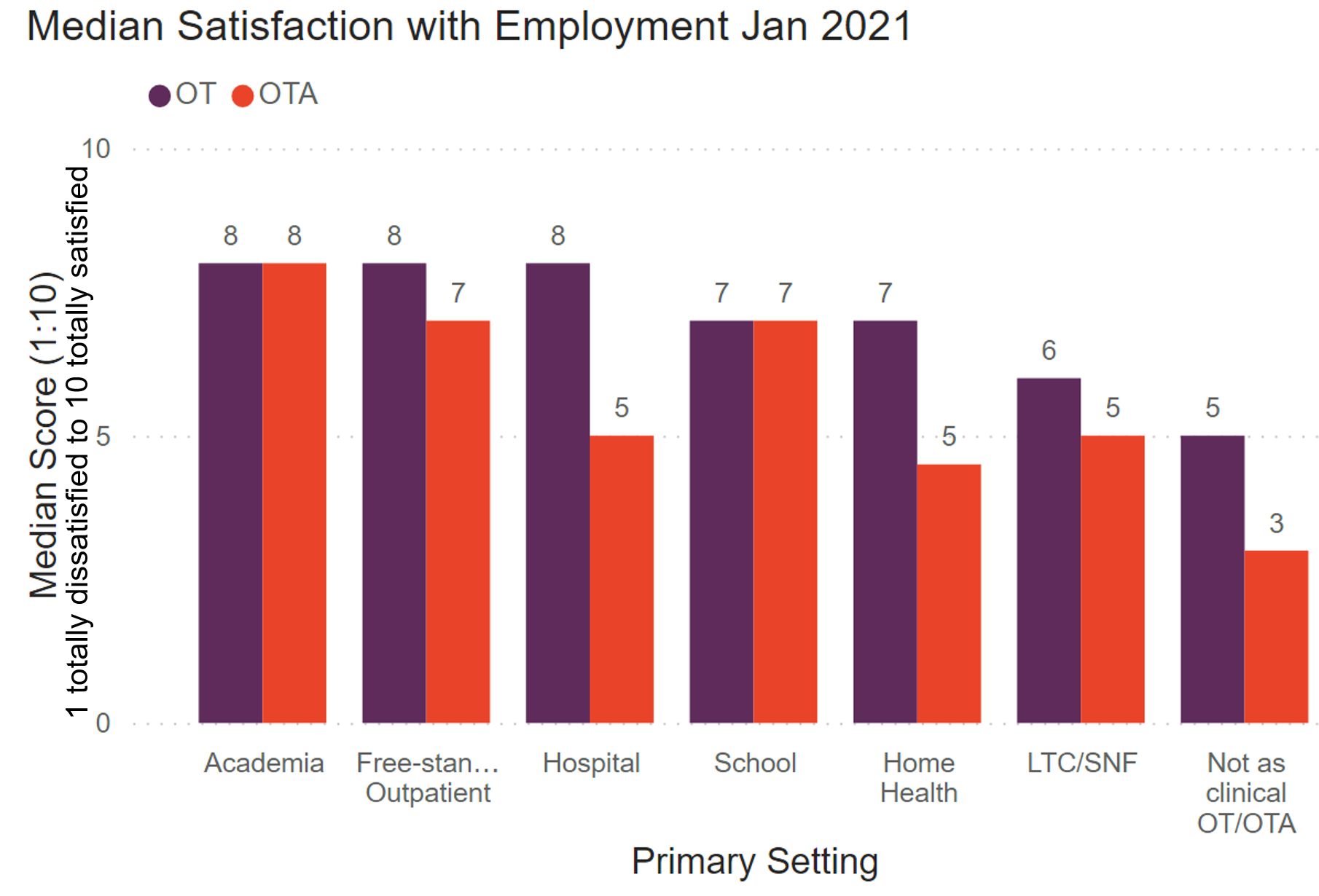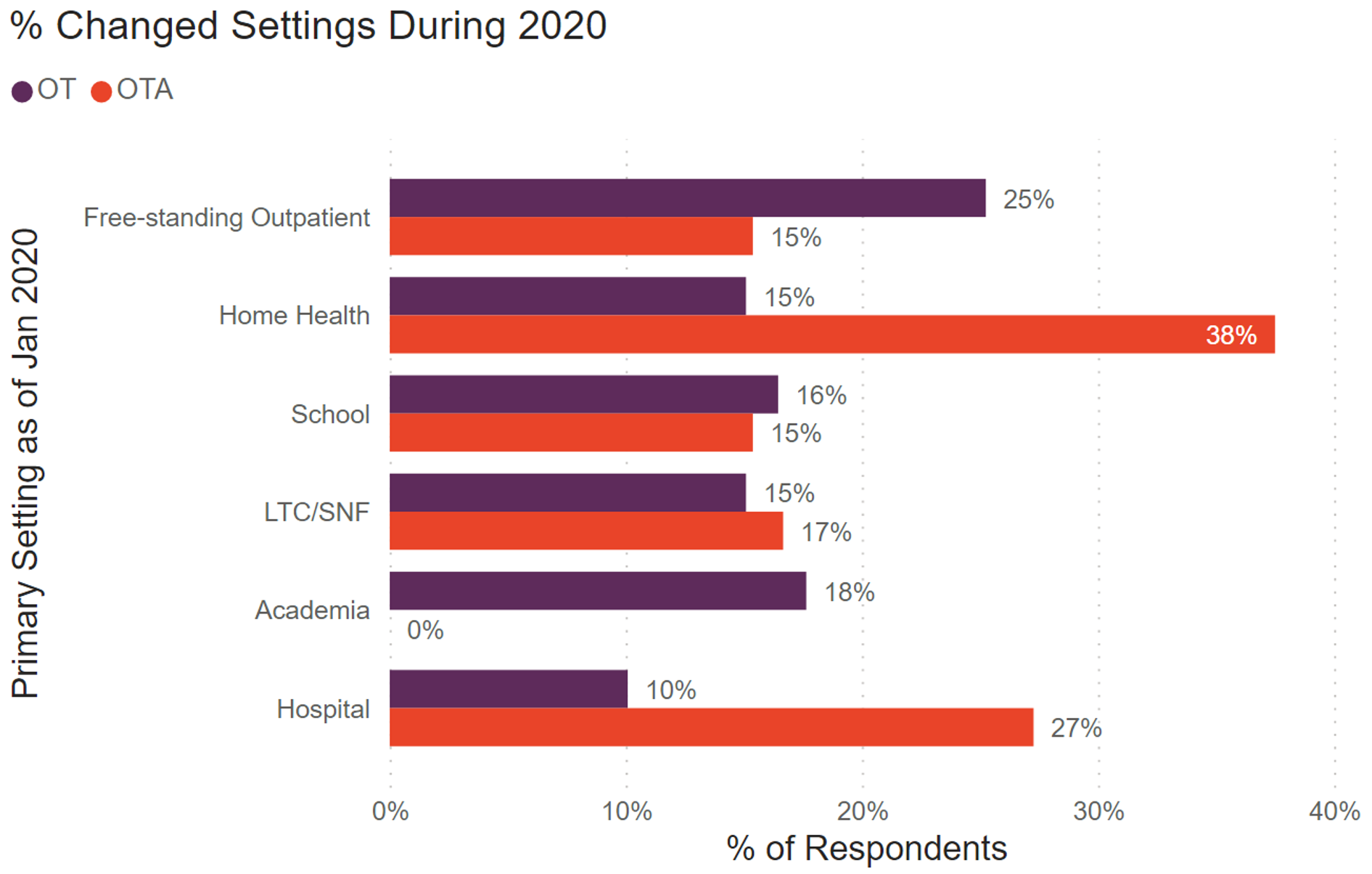Occupational therapy: Essential through the pandemic
Occupational therapy remains vital during the COVID-19 pandemic.
The COVID-19 pandemic has changed the face of many careers. Although there have been many challenges, occupational therapists and occupational therapy assistants have demonstrated resilience. Occupational therapy is a vital profession for the new normal.

Results by practice area
The American Occupational Therapy Association conducted three nationwide surveys to better understand the needs of the occupational therapy profession.
Download results by practice area
Occupational therapists are essential In nearly every setting, the percent of OTs who were considered essential increased over time. Between March and April 2020, the percent of OTs reporting they were essential increased substantially.
Occupational therapists are essential
In nearly every setting, the percent of OTs who were considered essential increased over time. Between March and April 2020, the percent of OTs reporting they were essential increased substantially.

Occupational therapy assistants are essential
The results were very similar for OTAs. Between March and April 2020, the percent of OTAs reporting they were essential increased substantially. 100% of OTA respondents in January said they were essential.

Telehealth and virtual services
OTs and OTAs adopted telehealth as a service delivery method. More OTs and OTAs provided telehealth and virtual services in January 2021 compared to April 2020.
We also saw evidence suggesting that OTs and OTAs were using clinical judgement to balance face-to-face and virtual service delivery. On average, OTs reported delivering approximately 8% of their services in hospitals and 15% in skilled nursing facilities using telehealth. OTAs reported delivering approximately 10% of their services in SNF and 40% of their services in schools using telehealth and virtual methods.

Employment satisfaction
Responding to the pandemic has not been easy. AOTA heard many stories from OTs and OTAs dealing with new stressors. Even so, satisfaction with employment remained relatively high. In schools, both OTs and OTAs rated their employment satisfaction as a 7 out of 10. In outpatient, the median score for OTs was 8 and for OTAs was 7.

Job mobility
A career in occupational therapy provides a lot of flexibility in work setting. In a typical year, anywhere between 10% to 20% of OTs and OTAs report changing practice settings. This held true during the pandemic for most practice settings, although there were a couple of outliers. More OTs in outpatient, and more OTAs in home health and hospitals reported changing practice settings.

Summary
In summary, the pandemic has been a challenging time for occupational therapy, just like many professions. But, OTs and OTAs have risen to the challenge. OTs and OTAs were quickly identified as being essential, as they have adopted telehealth to reach clients in new ways. OTs and OTAs in early intervention and schools were early adopters of virtual services. OTs and OTAs demonstrated the ability to adapt in a difficult situation. In many settings, satisfaction with employment remains relatively high.